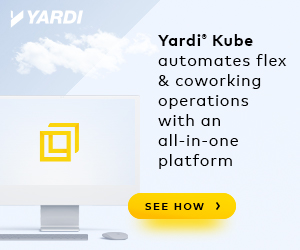- A report reveals the growing number of ‘hidden workers’ who are unemployed but eager to work.
- It is estimated that there are around 27 million hidden workers in the US alone.
- Refreshing job descriptions and applying “affirmative” logic to the hiring workflow can help companies attract hidden skilled workers.
Research by Harvard Business School and Accenture explores how employers can improve their approach to hiring talent by identifying untapped talent pools.
Hidden Workers: Untapped Talent reveals how uncovering these candidates can help organisations overcome skills shortages while becoming more diverse and inclusive.
Who are the ‘Hidden Workers’?
There are lots of people out there who are unemployed but eager to work.
We recently wrote about how a growing number of workers are stuck in part-time limbo, struggling to make ends meet in precarious and zero hours contracts.
Some people are desperate to work but, due to short-sighted hiring processes, essentially remain “hidden” from businesses that would benefit significantly from hiring them.
Suggested Reading: The New App Designed To Eliminate Bias In Recruitment
Harvard Business School and Accenture surveyed over 8,000 hidden workers for the report, and more than 2,250 executives across the US, UK and Germany.
The report found that although the hidden worker situation has been exacerbated by the pandemic, the problem has in fact been getting worse over the last few decades.
44% of middle-skill hidden workers reported that finding work was just as hard pre-Covid-19 as it was during the research’s 2020 survey period.
The report estimates that there are around 27 million hidden workers in the US alone. It found that these workers tend to fall into one of the following categories:
- Missing hours – working one or more part-time jobs but willing and able to work full-time;
- Missing from work – unemployed for a long time but seeking employment;
- Missing from the workforce – not working and not seeking employment but willing and able to work under the right circumstances.
Crucially, hidden workers don’t fit into one homogeneous group.
Today’s hidden workers include:
“…caregivers, veterans, immigrants and refugees, those with physical disabilities, and relocating partners and spouses.
“They also include people with mental health or developmental/neurodiversity challenges, those from less-advantaged populations, people who were previously incarcerated, and those without traditional qualifications.”
The report covers:
- Who the “hidden workers” are and what keeps them hidden
- The forces shaping the labour market, such as automation
- The efficacy of existing recruitment systems and processes
- How organisations can reform their approach to talent acquisition
What keeps hidden workers hidden?
The report identifies several barriers to employment for hidden workers. The first is the widening training gap.
Technology is evolving at such a fast pace that many workers are struggling to gain the necessary skills for roles. Concurrently, many traditional educational and training providers are finding it hard to keep up with changes to job content.
In the absence of education, there is a growing need for people to be employed to learn the skills they need to fulfil the role’s requirements.
Second is inflexible recruitment management/marketing and applicant tracking systems, which tend to rely on restrictive parameters.
Over 90% of employers in the survey use their recruitment marketing systems to initially filter or rank potential middle-skills (94%) and high-skills (92%) candidates.
Automation, although efficient in terms of time and resources, can exclude people from the hiring process from the outset.
Most organisations set parameters such as “college degree” for the job advertised, and automatically exclude candidates who have long term gaps in employment, for instance.
Consequently, candidates who might be suitable for the role with some training are eliminated from the process because their resume doesn’t match all the requirements programmed into the applicant marketing and/or tracking systems.
Thirdly, the report found that of the businesses that already engage with hidden workers, the majority do so in line with their corporate responsibility efforts.
Although this is largely positive, “it inherently reinforce[s] the myth that hiring hidden workers is an act of charity or corporate citizenship, rather than a source of competitive advantage.”
How can organisations include hidden workers?
Fortunately, there are lots of steps organisations can take to reform their approach to talent acquisition and include hidden workers in their pipeline.
The report offers the following tips:
1. Refresh job descriptions
“Most companies add new skills and experience preferences to existing job descriptions rather than re-evaluating those descriptions from scratch”, the report says.
“As a result, they end up with a candidate profile that is laden with legacy requirements and “nice to have” attributes rather than a focus on a limited list of “must-have” skills and experiences that correlate to performance in the role.”
2. Replace “negative” filters with “affirmative” ones
Companies should apply “affirmative” logic to their hiring workflow by configuring their system to identify candidates with the necessary skills for the job, instead of excluding candidates who lack a college degree, for instance.
3. Establish new metrics for evaluation
Most of today’s hiring systems focus and reward expense minimisation, says the report.
Instead, the emphasis should be on “asset maximisation”. Instead of cost, processes should be judged on, for instance, how long it takes for a new employee to achieve the expected productivity levels, how long they stay in the company and how quickly they advance.
This requires a revision of the entire HR lifecycle, not just at the recruitment stage.
4. See ROI as an incentive
The report explains that employers should be “shifting the justification for hiring hidden workers from corporate social responsibility (CSR) to ROI”.
A company that relegates a group of workers to a special recruiting status is not only acknowledging that its routine recruiting processes are failing to access that population, but also that the ordinary metrics by which candidates are being assessed are being waived.
“That undermines the legitimacy of the hidden workers’ employment in the eyes of colleagues and could undermine the ability and confidence of those workers to perform to their full potential. It also ignores the experience of the many employers that have found employing hidden workers to be a means of alleviating skills shortages.”
5. Focus on specific hidden worker groups
By targeting specific segments of hidden workers, employers can better tailor investment in training so that new employees are more supported to become productive members of the workforce.
“Additionally, by concentrating on a few segments, companies can more easily invest in developing relationships with skills providers, educators, social entrepreneurs, and other social agencies with knowledge and supportive programming tailored to those groups.”
6. Consider the application UX
84% of hidden workers who took part in the survey told the researchers that they find the application phase challenging.
As such, companies should consider the user experience (UX) when redesigning their application process with the aim of making it more accessible and inclusive.
Companies should also broaden their selection of skills providers to include those that hidden workers frequent.
“For example, 35% of middleskills hidden workers report that job centres are their primary channel for seeking work, but only 26% of employers prioritise them.”
7. Be transparent and inclusive
Why bother identifying and hiring hidden workers if they’re not going to be engaged and integrated into the workforce effectively? The report recommends that managers and colleagues should “understand the circumstances faced by former hidden workers”.
Ongoing efforts in corporate social responsibility (CSR) can help provide a bridge to a strategic approach to hiring hidden workers… the stories of employees who were once a member of a hidden worker group can also help introduce hidden workers to the workplace.
“Companies should consider choosing a senior leader to champion, direct, and monitor the evolution of hiring and onboarding practices.”
Read Harvard Business School and Accenture’s report in full here.

 Dr. Gleb Tsipursky – The Office Whisperer
Dr. Gleb Tsipursky – The Office Whisperer Cat Johnson – Coworking Marketing Maven
Cat Johnson – Coworking Marketing Maven Angela Howard – Culture Expert
Angela Howard – Culture Expert Drew Jones – Design & Innovation
Drew Jones – Design & Innovation Andrea Pirrotti-Dranchak – Competitive Advantage
Andrea Pirrotti-Dranchak – Competitive Advantage Jonathan Price – CRE & Flex Expert
Jonathan Price – CRE & Flex Expert Jeremy Fennema – Tech Innovation Alchemist
Jeremy Fennema – Tech Innovation Alchemist







